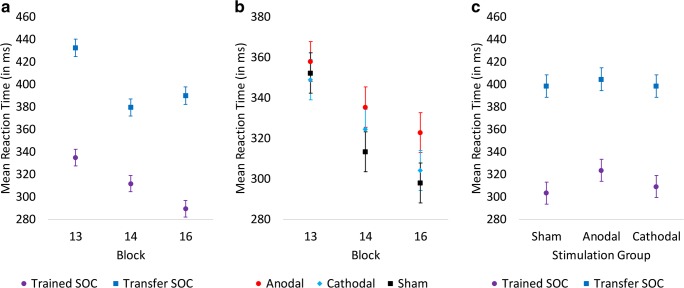Fig. 3.
a Mean RT (in ms) as a function of sequence type in the third and final probe blocks during training (block 13) and the probe blocks during test (24-h follow-up). Performance of both sequences benefits from overnight sleep, but further exposure to the trained SOC facilitates performance of this sequence, whereas it interferes with performance of the transfer sequence. b Mean RT (in ms) as a function of stimulation group in the third and final probe blocks during training (block 13) and the probe blocks during test (24-h follow-up). The groups no longer differed at the end of training on day 1, but the anodal stimulation group again demonstrated longer RT in probe blocks at 24-h follow-up. c Mean RT (in ms) as a function of sequence type and stimulation group collapsed across the two probe blocks 14 and 16 at 24-h follow-up. The anodal stimulation group demonstrates longer RT than cathodal and sham groups, and this difference is larger for the trained SOC. Error bars represent standard error of the means

